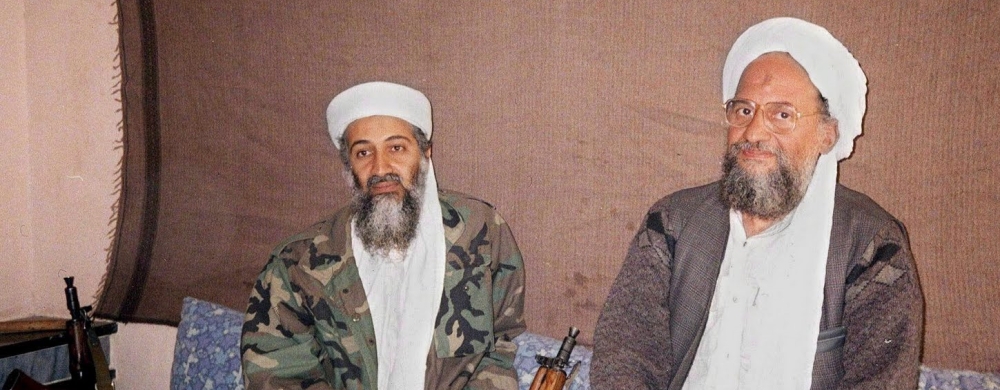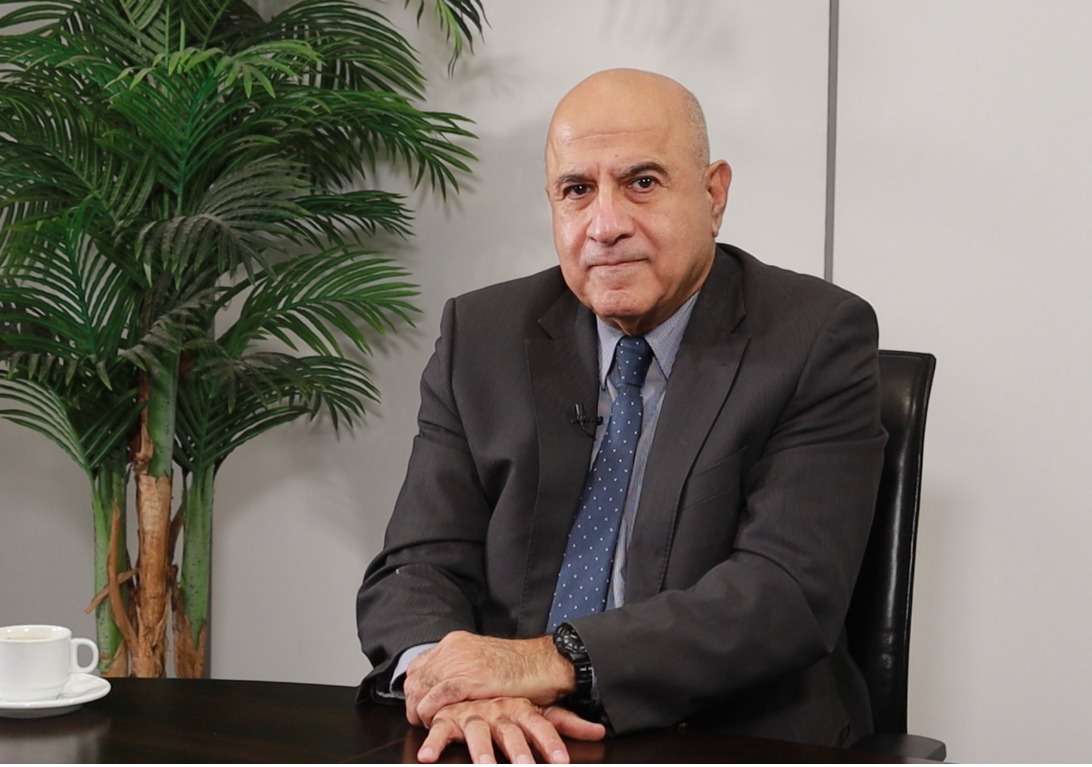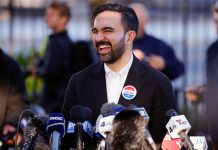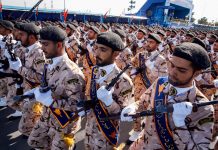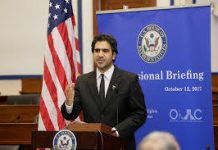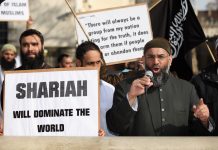A Suggestion for the Islamic State Book Club: Barbarian history buffs should read about their origin
Clifford D. May/The Washington Times/November 13/15
After a long week of slitting throats, smashing antiquities and raping infidel slave girls, how do the Islamic State’s barbarians unwind? Some, apparently, discuss the finer points of history.
An Islamic State billboard I recently came across (on the internet – not driving down the road to Raqqah, the Islamic State capital in what used to be Syria) shows a rifle affixed to a compass (the kind used for drawing arcs and measuring distances on maps), along with the inscription: “We are the ones who determine our borders, not Sykes-Picot.”The reference is to two dead, white, Christian males, Sir Marc Sykes and Francois Georges-Picot, British and French diplomats respectively. They were the principle negotiators of the 1916 Sykes-Picot Agreement that divided into nation-states Middle Eastern territories that for centuries had been possessions of the Ottoman Empire and Sunni caliphate.
That treaty, leaders of the Islamic State (also known as ISIS or ISIL) believe, imposed upon the region an unjust political structure, one they are using force of arms to deconstruct and replace with a new and improved empire and caliphate. I wonder: Where and when do Islamic State medievalists talk about such topics? Do they organize discussion groups in homes, schools and mosques? Perhaps they have book clubs. If so, I would recommend to them “The Tail Wags the Dog: International Politics and the Middle East,” by Efraim Karsh, professor emeritus at King’s College London, currently teaching at Bar-Ilan University in Israel. In it, he makes the case that the conventional wisdom is wrong: Europeans did not shape the modern Middle East to suit their imperialist, colonialist and/or satanic interests.
He contends that Middle Eastern leaders and rulers “have been active and enterprising free agents doggedly pursuing their national interests and swaying the region pretty much in their desired direction, often in disregard of great-power wishes.” He adds: “External influences, however potent, have played a secondary role, constituting neither the primary force behind the region’s political development nor the main cause of its notorious volatility.”Prof. Karsh recalls what many choose to forget: Imperialism and colonialism were by no means only European/Christian institutions. Many of antiquity’s greatest imperial and colonial projects were Middle Eastern/Muslim. From the 13th century to the 20th, the Ottoman Empire sought to conquer and expand– not least in Europe. Its collapse came about when its sultan decided to enter what became known as World War I on what turned out to be the losing side.
Even so, Prof. Karsh writes, Britain “remained wedded to the Muslim empire’s continued existence, leaving it to a local Meccan potentate – Sharif Hussein ibn Ali of the Hashemite family – to push for the idea of its destruction.” Prof. Karsh concludes that it was Sharif Hussein’s vision that transformed the region: “The emirate of Transjordan (later to be known as the Kingdom of Jordan) was established in 1921 to satisfy the ambitions of his second son Abdullah, while in the same year the modern state of Iraq was created at the instigation of Abdullah’s younger brother Faisal. Hussein himself became King of the Hijaz, Islam’s birthplace, only to be evicted a few years later by a fellow Arabian potentate, Abdul Aziz ibn Saud, founding father of Saudi Arabia.”Over the years that followed, outsiders had minimal impact on the region. Even after World War II, the United States and the Soviet Union, despite their considerable military and economic muscle, found themselves “powerless to contain undesirable regional developments” from the fall of Iraq’s pro-Western Hashemite dynasty in 1958 to the Islamic revolution in Iran in 1979.
Washington and Moscow “were forced to acquiesce in actions with which they were in total disagreement.” Whatever successes other foreign nations have had, Prof. Karsh argues, have been “largely due to the convergence of their own wishes with indigenous trends.”At present, of course, those trends are stunningly savage. “The last great Muslim empire may have been destroyed and the caliphate left vacant,” Prof. Karsh notes, “but the longing for unfettered suzerainty, though tempered and qualified in different places and at different times, has never disappeared, and has resurfaced in our day with a vengeance.”
The Islamic State, as well as such rivals as al Qaeda and the Islamic Republic of Iran, seek to overturn not just Sykes-Picot but also the broader Westphalian system of nation-states vowing to respect each others’ sovereignty and territorial integrity. And not just in the Middle East. Prof. Karsh quotes Yusuf Qaradawi, “a spiritual guide of the Muslim Brotherhood and one of today’s most influential Islamic thinkers, whose views are promulgated to millions of Muslims worldwide through the media and the internet: ‘Islam will return to Europe as a conqueror and victor.’”
The means to this end preferred by the Islamic State and al Qaeda is jihad or, to use the phrase President Obama prefers: “violent extremism.” Iran is finding diplomacy useful: the deal recently agreed to by President Obama and the leaders of five other powers will provide the clerical regime with funds, conventional arms and a path to nuclear weapons. Other Islamists envision “a gradual takeover of Western societies through demographic growth and steady conversion.” These approaches are not mutually exclusive. More likely, they are more mutually reinforcing. One might even call them components of a grand strategy. Denizens of the Islamic State inspired by the message on the billboard really should invite Prof. Karsh to join them for coffee and baklava. In the unlikely event that happens, I’d advise him to send his regrets. It’s not that they wouldn’t regard his historiography as cutting-edge. It’s just that they may define that term a bit too literally.
**Clifford D. May is president of the Foundation for Defense of Democracies (FDD) and a columnist for the Washington Times. Follow him on Twitter @CliffordDMay
http://www.defenddemocracy.org/media-hit/may-clifford-d-a-suggestion-for-the-islamic-state-book-club/
Not a Conspiracy
Thomas Joscelyn/The Weekly Standard/November 13/15
In May, the London Review of Books published a 10,000-word exposé by veteran investigative journalist Seymour Hersh on the killing of Osama bin Laden. It was widely read online, receiving “more than two million page-views,” according to an editor’s note inserted at the bottom. While Hersh’s account was popular in the Internet’s fever swamps, however, it was given little credence by the mainstream press. The New Yorker, where Hersh has published much of his work, passed on the story. Indeed, the thinly sourced piece seems implausible on its face. The few anonymous sources cited—most of the piece is based on the testimony of a single “retired senior intelligence official”—posit a vast conspiracy by the Obama administration to cover up the true story of how al Qaeda’s founder was located and killed. Such an extraordinary claim demands extraordinary evidence, which Hersh failed to deliver.
Then, in mid-October, Hersh received a much-needed endorsement of sorts from the New York Times Magazine. Writing under the headline “What Do We Really Know About Osama bin Laden’s Death?” Jonathan Mahler did not argue that Hersh was necessarily right. But he considered Hersh’s story just as plausible as those sourced mainly to Obama administration officials. As Mahler explained to Hersh, he “wasn’t going to offer a definitive judgment on what happened,” but instead “saw this as more of a media story, a case study in how constructed narratives become accepted truth.” Mahler’s piece, at more than 7,000 words, was enough to give Hersh’s story a veneer of mainstream acceptability.
Yet Mahler missed a fatal flaw in Hersh’s account. Neither Mahler nor Hersh examined the dozens of publicly available files recovered from Osama bin Laden’s compound. If Mahler had looked at some of these files, which can be found online with ease, he would have discovered that Hersh’s chief source is not credible. The retired official Hersh cites makes the following claims: Osama bin Laden was being held “hostage” by Pakistan’s Inter-Services Intelligence agency for years prior to the Abbottabad raid. The ISI used bin Laden as “leverage” over al Qaeda and the Taliban before trading him to the United States for cash. The idea that bin Laden was still in charge of al Qaeda’s operations at the time of his death is a “great hoax,” because very little terror plotting could be linked to al Qaeda since 2006. And “nothing has come” of the U.S. government’s analysis of bin Laden’s files. The documents recovered in the Abbottabad raid show that each of these claims is demonstrably false. The first set of documents was released in May 2012 via West Point’s Combating Terrorism Center. A second set came to light in February of this year as a result of a terror trial in Brooklyn. In May, the Office of the Director of National Intelligence released more files on a webpage titled “Bin Ladin’s Bookshelf.”
These three releases constitute a small subset of the total haul recovered in bin Laden’s lair—several dozen out of more than a million documents and files. As The Weekly Standard has reported on more than one occasion, that is the real story. Even so, the documents publicly available contradict Hersh’s piece in crucial ways. For example, Hersh writes that “bin Laden had been a prisoner of the ISI at the Abbottabad compound since 2006.” This is flat wrong. The Abbottabad files show that al Qaeda’s founder was hardly a “prisoner.” In his final months, bin Laden even worried that Pakistani intelligence operatives were tracking some of his family members and key subordinates. A more explosive revelation concerning al Qaeda’s dealings with the Pakistani state is in a memo written by bin Laden’s chief lieutenant, Atiyah Abd al-Rahman, in July 2010. Al Qaeda was deeply enmeshed in the jihadist insurgency then raging in northern Pakistan. Some Pakistani officials, including those in the ISI, wanted to negotiate a truce. After discussing the matter with Ayman al Zawahiri, then bin Laden’s second-in-command and now al Qaeda’s chief, Rahman and his comrades came up with a plan for the talks. Al Qaeda was willing to make a deal with the Pakistani government, if the military and intelligence services stopped fighting al Qaeda and its allies.
“Our decision was this: We are prepared to leave you [the Pakistanis] be. Our battle is primarily against the Americans. You became part of the battle when you sided with the Americans,” Rahman wrote to bin Laden, outlining the position al Qaeda would take. “If you were to leave us and our affairs alone, we would leave you alone. If not, we are men, and you will be surprised by what you see; God is with us.” Rahman informed bin Laden, who approved the talks, that al Qaeda had let news “slip” of “big, earth shaking operations in Pakistan” that had been “halted” by the jihadists’ leaders. “But if Pakistan does any harm to the mujahidin in Waziristan, the operations will go forward, including enormous operations ready in the heart of the country,” Rahman wrote. Rahman named two Pakistani officials who responded to the threat. One is Shah Baz Sharif, the head of the regional Punjab government and the brother of Nawaz Sharif, Pakistan’s current prime minister. The second is “Shuja’ Shah,” who appears to be Ahmad Shuja Pasha, then head of the ISI. “We received a messenger from them bringing us a letter from the Intelligence leaders including Shuja’ Shah, and others,” Rahman wrote. “They said they wanted to talk to us, to al Qaeda. We gave them the same message, nothing more.”
It is not possible to piece together the full story of al Qaeda’s negotiations with the Pakistani government in 2010 from the available files. The many documents that remain classified may shed additional light. But the information we can glean is stunning. The memo from Rahman shows that high-level Pakistani officials were at least willing to talk about cutting a deal with al Qaeda. Rahman’s memo, released as part of the Brooklyn terror trial in February, completely contradicts Seymour Hersh’s key source. The retired official claims to have an insider’s knowledge of meetings between ISI head Pasha and CIA director Leon Panetta in the spring of 2011. During those meetings, Pasha supposedly explained why the ISI had been holding bin Laden prisoner since 2006. According to the retired official, the “ISI was using bin Laden as leverage against Taliban and al Qaeda activities inside Afghanistan and Pakistan.” If the Taliban and al Qaeda “ran operations that clashed with the interests of the ISI,” the ISI “would turn bin Laden over to” the Americans.This is a fantasy. Hersh’s source appears to be ignorant of the jihadists’ actual operations inside Pakistan. They were waging an insurgency in the years leading up to the Abbottabad raid. And the ISI knew who to negotiate with in an attempt to make them stop: Osama bin Laden. He was not the ISI’s “hostage.” Hersh recounts a briefing by an Obama administration official shortly after the Abbottabad raid. The official said the bin Laden files were a “treasure trove . . . the single largest collection of senior terrorist materials ever.” He described bin Laden as “an active leader in al Qaeda, providing strategic, operational, and tactical instructions to the group.” Hersh makes no attempt to analyze these documents, which he could have easily downloaded. He has others characterize what is and isn’t in the files, and those descriptions are wholly inaccurate.
Relying on his primary source, the retired official, Hersh argues the post-raid claims about the al Qaeda master’s importance were “fabrications,” because “there wasn’t much activity for bin Laden to exercise command and control over.” The ex-spook “said that the CIA’s internal reporting shows that since bin Laden moved to Abbottabad in 2006 only a handful of terrorist attacks could be linked to the remnants of bin Laden’s al Qaeda.” Here, Hersh’s source demonstrates more ignorance. Bin Laden oversaw not only al Qaeda’s ongoing terrorist operations targeting the West, but also its guerrilla armies fighting across multiple continents. Al Qaeda was involved in far more than a “handful” of plots after 2006. Consider the following. In September 2007, European officials broke up two terror plots traced back to al Qaeda and affiliated groups in northern Pakistan. In late 2008, an American named Bryant Neal Vinas was captured in Pakistan and confessed to authorities that he had provided al Qaeda detailed information on the Long Island Railroad. In October 2009, David Headley, another American citizen, was arrested and subsequently convicted of helping plan the November 2008 Mumbai attacks, which were principally carried out by Lashkar-e-Taiba, a group closely allied with al Qaeda. Headley’s surveillance reports from Mumbai were reportedly found in bin Laden’s possession. Al Qaeda also tasked Headley with plotting an attack on Jyllands-Posten, the Danish newspaper that published cartoons of the prophet Muhammad. In 2009, an al Qaeda cell trained in northern Pakistan plotted to blow up New York City subways. In 2010, on Osama bin Laden’s orders, al Qaeda plotted Mumbai-style attacks in Europe. In 2009 and 2010, Al Qaeda in the Arabian Peninsula, which answered to bin Laden, placed a would-be suicide bomber on a Detroit-bound passenger plane and attempted to deliver packages filled with explosives into the United States via a cargo jet. Each of these plots was thwarted, through vigilance or luck.
Al Qaeda was far more active than Hersh’s source lets on. As first reported by the Washington Post, the initial six-week triage of the documents “produced more than 400 intelligence reports,” prompting “public warnings of al Qaeda plots against trains and other targets” and triggering “a small number of operations overseas, including arrests of suspects who are named or described in e-mails that bin Laden received.” Director of National Intelligence James Clapper testified before Congress in April 2013 concerning those intelligence reports, saying they included “immediate threats” and “threat plotting.”
The declassified Abbottabad files also give us a sense of bin Laden’s day-to-day duties. In the last year and a half of his life, Osama bin Laden: made sure operatives responsible for al Qaeda’s “external work” (operations against the West) answered up the chain-of-command to him; ordered al Qaeda’s branches in Africa to designate recruits capable of taking part in these “external” plots; received a status report on al Qaeda’s “very strong military activity” across eight of Afghanistan’s provinces; with his commanders deliberated Al Qaeda in the Arabian Peninsula’s war strategy for fighting the Yemeni government; advised Shabaab’s leader in Somalia to hide his organization’s al Qaeda role; had one of his subordinates research the applicable sharia laws for Shabaab’s governance efforts; reviewed the résumés of candidates being groomed for leadership positions within his organization; received a portion of the $5 million ransom al Qaeda got in exchange for an Afghan official held hostage; ordered the relocation of al Qaeda members and leaders out of northern Pakistan into Afghanistan and other areas; critiqued the propaganda put out by AQAP and set forth media policies; oversaw the relocation of key operatives into Libya; and reviewed the policies and instructions sent to al Qaeda groups around the world.
These are just some of the revelations contained in the bin Laden files. Again, only a small fraction of the entire cache has been made available to the public. Hersh’s source claims the White House “created” the “treasure trove story,” because it needed to show that bin Laden “was still operationally important” to justify killing him. The slaying of bin Laden was, in this retired official’s assessment, “premeditated murder.” But only in the bizarre moral universe of Hersh’s story-teller does the killing of bin Laden, the man who oversaw the 9/11 attacks and other atrocities, need justification. Hersh’s “retired official disputed the authenticity” of some of the bin Laden documents. Of course: If they’re genuine, Hersh doesn’t have a story. But the idea they were forged is absurd. Imitating bin Laden’s writing in Arabic—a language in which the U.S. government struggles to field translators—on topics that require detailed knowledge of granular points is impossible, especially on a mass scale. “It’s not that the truth about bin Laden’s death is unknowable; it’s that we don’t know it,” Mahler writes in his generous review of Hersh’s conspiracy theory. Mahler is right that the media’s job is to question the government’s version of events. It is likely that there is much more to learn about bin Laden’s stay in Abbottabad. Pakistan is a complicated country, filled with internal divisions and contradictions. It is possible, if not likely, that parts of the ISI were in cahoots with bin Laden. And the ISI certainly knew how to get in touch with al Qaeda’s founder.
But more than four years after bin Laden was killed by Navy SEALs, we know this: No one should be fooled into thinking that Hersh and his single source know the “truth.”















